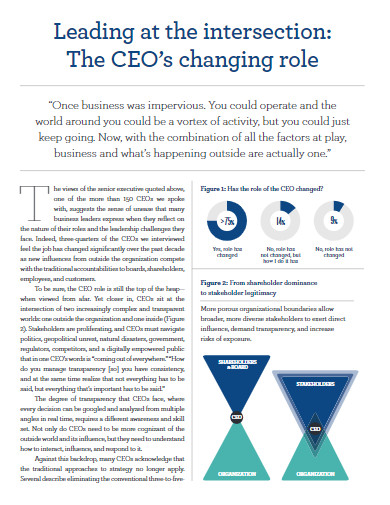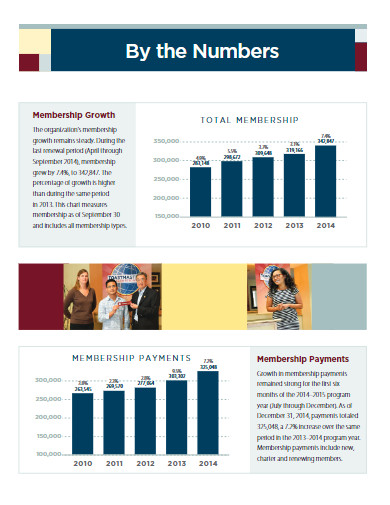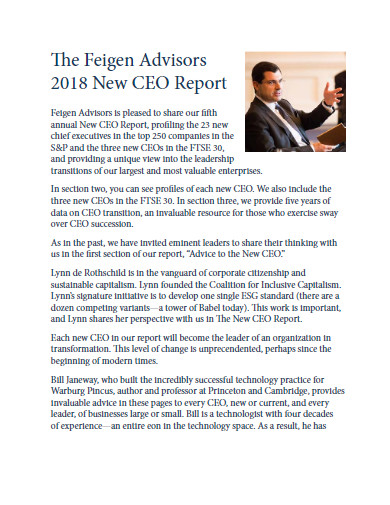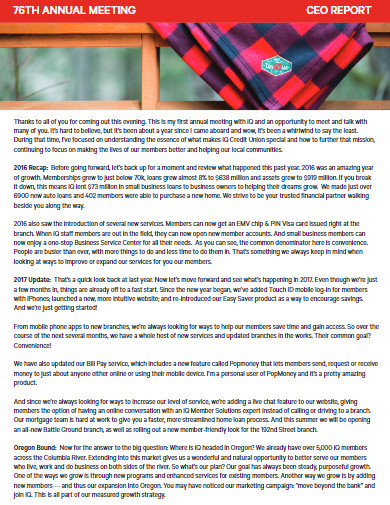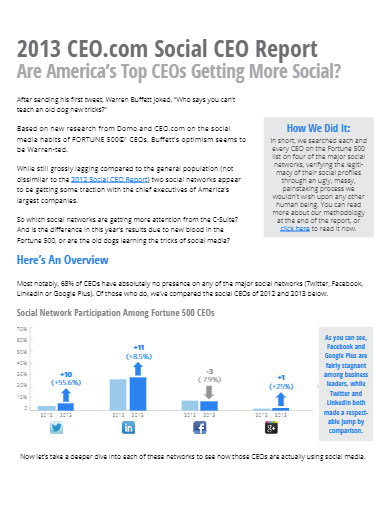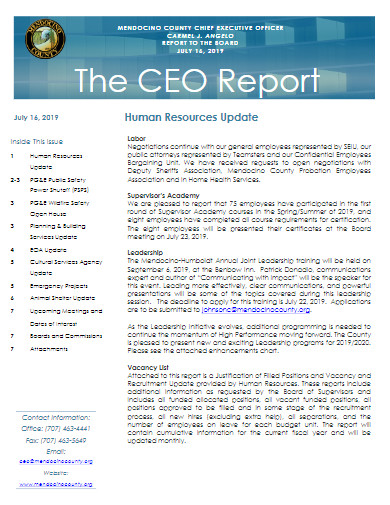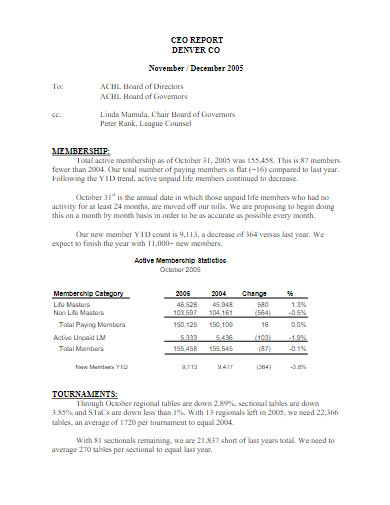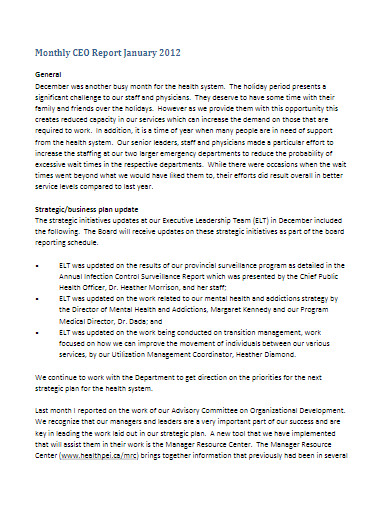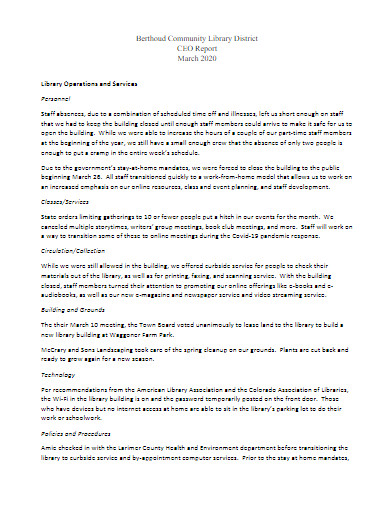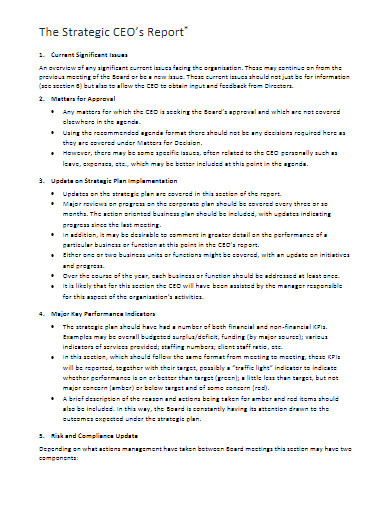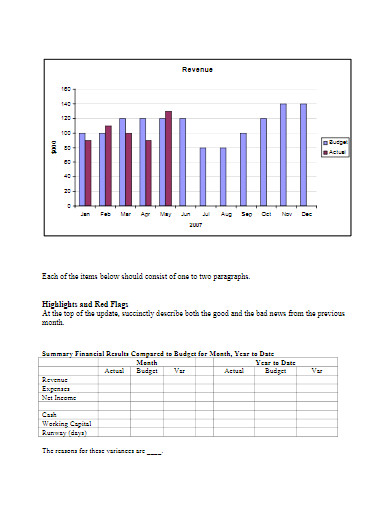10+ CEO Report Examples to Download
CEOs are the head honchos of every company team. It’s their responsibility to oversee everything that’s happening in the daily operations. They’re the ones who make the biggest decisions that affect almost every aspect of the business. That’s how much power they have, being at the top of the organizational chart. However, CEOs wouldn’t be able to fulfill their duties well without the help of department managers and administrative assistants like you. Employees like you directly communicate with CEOs about the company’s status. The best way to perform that task is by writing them a business report. So to make your job easy, download our CEO Report Examples below!
10+ CEO Report Examples in PDF
1. CEO Report Template
2. Monthly CEO Report
3. New CEO Report
4. Annual Meeting CEO Report
5. Social CEO Report
6. CEO Report Example
7. Sample CEO Report
8. Monthly CEO Report in PDF
9. Library CEO Report
10. Strategic CEO’s Report
11. CEO Report in PDF
What Is a CEO Report?
A CEO report is a document or memo that contains information about the company’s current state that a CEO must know. Information such as sales status, profit earnings, and project progress are among the most crucial data of a CEO report.
Although a CEO’s job is to oversee the company, he or she can’t do it alone. A CEO needs the perspective of the company managers to have a better look at the business’s condition. That’s why managers and administrative assistants like you must submit a CEO report regularly.
The CEO & The Chairman of the Board – Who Has More Authority?
We’ve emphasized at the beginning of this blog that the CEO is the head honcho. But the individual who has the ultimate power is the chairman of the board. However, the CEO and the chairman of the board collaborate in discussing issues and making decisions for the company’s future. Both of them hold the reins in steering the business in the right direction. But many companies enable the CEO to have more freedom in controlling things. That’s because they see better results if the CEO is in the driver’s seat. But it’s the chairman of the board who’ll approve every business move that the CEO imposes.
How to Write a CEO Report
Writing a CEO report can be a daunting task. It’s normal to feel some pressure making such a report. You’re addressing it to the CEO, the big boss of your company. So it’s understandable if you feel some butterflies. Despite that, writing a CEO report isn’t as hard as it sounds. You just have to state the facts of the company’s condition and communicate them to the CEO professionally. We have gathered a few steps to help you with that.
Step 1: Write a Short Introduction
First, write a brief introduction or executive summary of the report. It should summarize everything that the CEO should expect in the report you’ve written. You can start it by emphasizing the stretch of time that the report covers. There are weekly reports, monthly reports, or annual report examples.
Step 2: Organize the Data You’ve Gathered
Make sure to organize the data you’ve gathered for the report. It should be cohesive so that the CEO can easily follow the information. You can do that by putting subsections in your report and placing the data in their proper order.
Step 3: Add Statistics to Support the Facts
The CEO will want hard evidence to support the credibility of what your report conveys. The best evidence that you can provide are numerical statistics. You can show them to the CEO in the form of graphs and charts. Plus, you can also include previous records to compare them with current stats.
Step 4: Use a Minimalist Tone of Writing
It’s crucial to use a minimalist tone in writing a CEO report. It has to be straight to the point and simple. You have to convey every important note to the CEO straightforwardly. Along with being a minimalist writer, you have to be transparent. If there are glaring issues within the company, don’t sugarcoat them. Communicate them to the CEO openly. A CEO report should be crystal clear.
FAQs
Does a CEO have a seat on the board?
Yes, a CEO can also have a seat on the board of directors. But even if a CEO isn’t a part of the board, he or she is still an important participant during board meeting sessions.
Is the CEO also the company owner?
Not all CEOs hold ownership of the companies they handle. Some of them were appointed by the owners to helm the position and be their successors. But most CEOs of startup companies are also the owners. A good example would be Mark Zuckerberg. He’s the founder of Facebook and took the role as CEO when it first launched.
Is it possible to fire a CEO?
Yes, CEOs can be fired from their position. According to a report from CNN Business, 24% of fired CEOs between 2001 to 2017 lost their position because of underperforming. That shows that no matter how powerful a CEO is, he or she isn’t exempted from doing honest work. The board of directors have the authority to oust a CEO if he or she is becoming a liability in the company.
Communication between the employees and the CEO is an essential procedure in business operations. The CEO should be the same page with every department in the company. So make the best CEO report with the guidance of our examples and templates. Don’t forget to download them! And you may also want to check out our Progress Report Examples.



